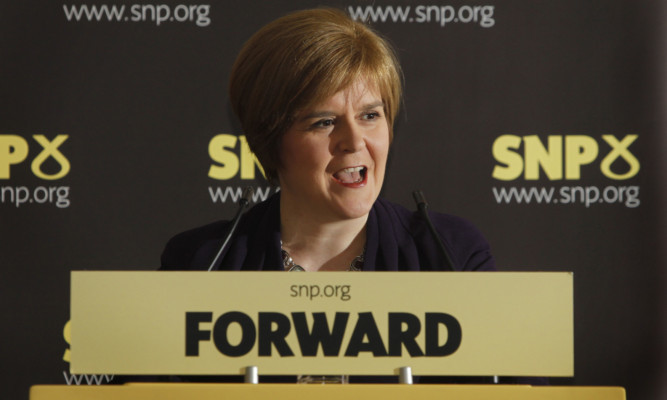Deputy First Minister Nicola Sturgeon has pledged to undo “the worst impacts” of UK Government welfare reforms, particularly those affecting women, should Scotland vote for independence.
She committed to changing the universal credit system which “discriminates against women”.
Ms Sturgeon made the pledge during a speech in Glasgow on independence, shortly after Scottish Labour launched its own campaign for staying in the Union.
Her address to SNP supporters, in which she argued there is a “natural majority” for independence, was threatened with disruption when a group protesting against day centre closures got into the venue.
People will vote Yes next year if they can be convinced Scotland can be a wealthier and fairer country, the Deputy First Minister told her audience.
The SNP will make a series of policy announcements over the coming months which will demonstrate how this can be achieved, she said.
The SNP has already pledged to scrap the so-called bedroom tax should Scotland vote Yes. Ms Sturgeon said the party will also move away from single household payments.
“The new universal credit system discriminates against women. It undermines the independence of women. Unlike the current system, which makes payments to individual claimants, it will be paid in one single household amount which will, more often than not, mean to the man in a household,” she said.
“And because it applies a single earnings disregard when people move into work, it reduces the incentive to work for second earners in a household, who will usually be women. So when a woman, whose partner already works, gets a job she will gain very little in return. Her marginal tax rate will be upwards of 60%.
“It is no wonder that universal credit has been described as reinforcing the notion of the male breadwinner, a concept that is outdated and totally out of touch with the reality of many modern families.
“So, I can confirm today that we would move away from single household payments and give women back the ability to receive support in their own right. And we would equalise the earnings disregard between first and second earners, making work more attractive for women, more rewarding for women and more likely to lift children out of poverty.”
